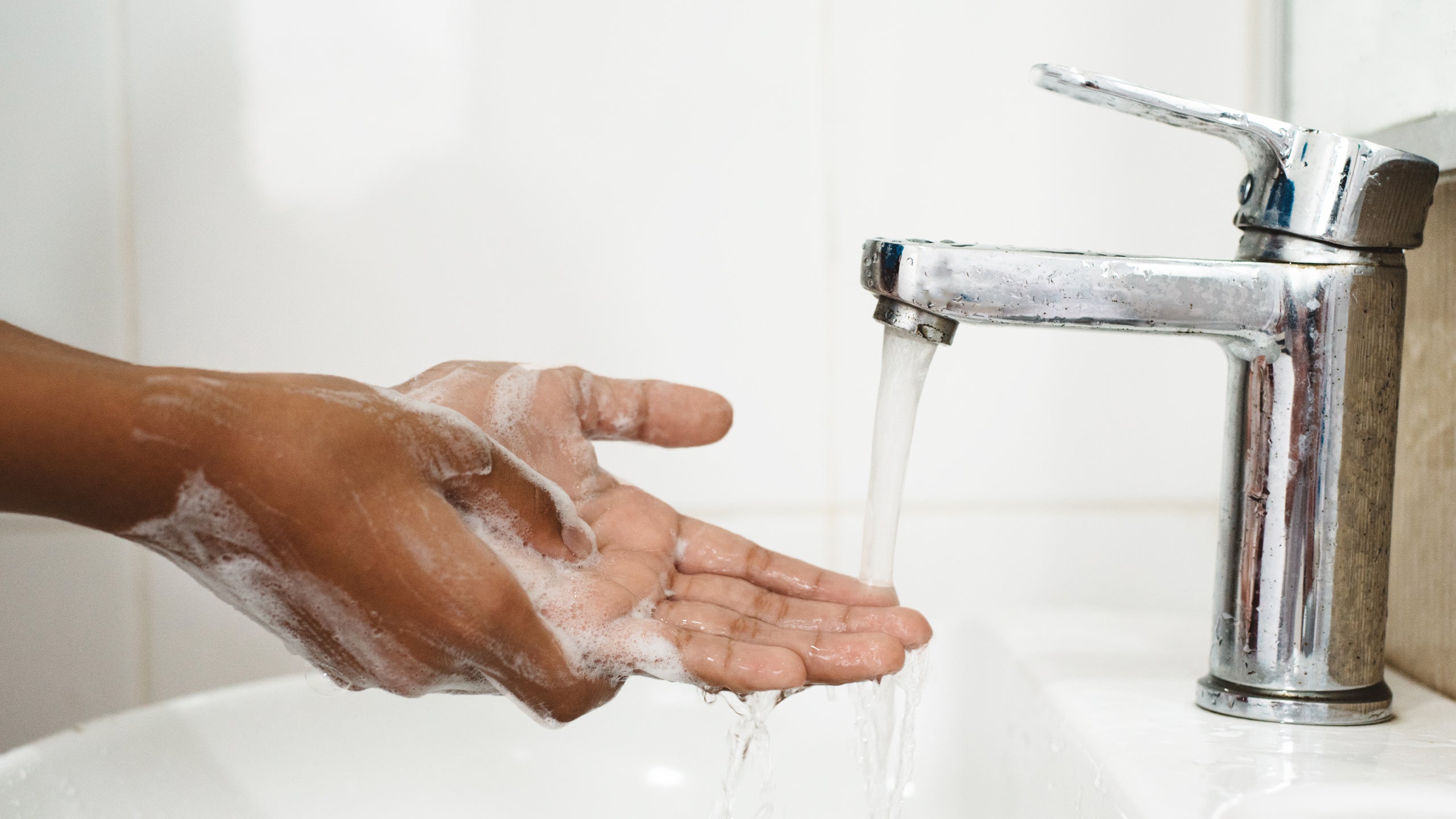No one wants to get sick — that’s why it’s easy to get caught up in trying to kill off all the germs that may be lurking on your hands.
But in this day and age, there are many options when it comes to washing your hands and killing off those nasty bacteria and viruses. You’ve probably heard of the terms ‘antibacterial’ and ‘antimicrobial’ when shopping for hand soaps before… but what do they mean?
Today, we’re covering the basics of what antibacterial and antimicrobial soaps are and how you should be cleansing your skin on a daily basis. Let’s dive in!
What is Antibacterial Soap?
Chances are you’ve seen the words “antibacterial soap” on plenty of hand soap labels lining the grocery store shelves.
Many cleansers available today contain antibacterial ingredients, which means they kill off or inhibit bacteria on the skin surface. Before they were banned in over-the-counter antibacterial products by the FDA, two of the most common antibacterial ingredients used to be triclosan and triclocarban.
Now, you’ll likely see benzalkonium chloride or benzethonium chloride on the ingredients list as the active antibacterial ingredients. Manufacturers are continuing to test the efficacy and safety of these ingredients for humans.
That means the ingredients found in today’s antibacterial soaps are still a bit dicey.
What is Antimicrobial Soap?
You’ve likely never seen antimicrobial soap advertised before… and that’s because most antimicrobial products are actually sanitizers and disinfectants. Think: the hand sanitizer you keep in your car, or the strong cleansers used to disinfect in hospital settings. While antibacterial cleansers destroy only bacteria, antimicrobial cleansers kill off or inhibit microorganisms, including bacteria, fungi, and viruses.
Antimicrobial cleaners are categorized and regulated by the U.S. Environmental Protection Agency as pesticides. The word ‘pesticides’ can sound scary, but antimicrobials are regulated as such because they kill off organisms. So, it’s not as worrisome as it actually sounds.
Antibacterial vs. Antimicrobial: Determining Which is Safer and More Effective
Antibacterial soaps have been a hot topic, one The U.S. Food and Drug Administration has spoken extensively about. There are three main concerns surrounding these bacteria-killing solutions:
- Efficacy
- Safety
- Antibiotic resistance
Interestingly, the FDA says, “At this time, FDA doesn’t have evidence that triclosan in OTC consumer antibacterial soaps and body washes provides any benefit over washing with regular soap and water.”
Yet, while these antibacterial ingredients don’t seem to provide any benefits, they do pose certain health risks. Let’s take a look at benzalkonium chloride since it’s still able to be used freely in antibacterial soaps today.
According to the Environmental Working Group, benzalkonium chloride ranks high in allergies and immunotoxicity, which simply means it’s a known toxin/allergen.
Harsh chemical toxins like benzalkonium chloride because they’re the very ingredients that can also trigger pesky, uncomfortable skin conditions like redness and eczema.
Then, of course, there’s the concern with these antibacterial soaps contributing to antibiotic resistance, a health crisis the World Health Organization has referred to as a "threat to global health security."
Antibiotic resistance takes place when antibiotics have been heavily used. In the case of resistance, a small group of mutated bacteria has survived exposure to these harsh chemicals that are designed to kill them. Without the presence of enough healthy bacteria (because the antibiotics have killed them off), the resistant group of bacteria flourishes. When left unmanaged, a serious threat has emerged — without an effective solution to combat it.
Luckily, on the other hand, antimicrobial cleaners don’t pose this same threat. Because antimicrobial products often contain alcohol as their active ingredient, they kill bacteria (as well as viruses and fungi) differently than antibiotics.
They actually break down these microorganisms, so for your hand sanitizer to be effective, it’s important to leave it sitting on the skin for a period of time, rather than getting your hands wet or washing them off shortly after.
So, here’s the final verdict on antimicrobial vs. antibacterial soaps:
- Steer clear of antibacterial soaps. There’s no evidence they’re any more effective at killing off germs than traditional soap and water.
- Antimicrobial hand sanitizers can be beneficial if you don’t have access to soap and water, but they shouldn’t be used daily, as they’re still a harsher solution to germs.
- Antimicrobial disinfectants in hospitals are definitely here to stay! It’s vital those settings remain clean and germ-free for those with compromised systems in hospitals.
What to Use for Daily Cleansing
While we believe antimicrobial products do have a place to be used sparingly in our germ- and virus-infected environments, these alcohol-based cleansers shouldn’t be used on a regular basis in your daily home life. (Hospitals are another situation entirely.)
When you don’t have soap and running water available, it makes sense to use antimicrobial hand sanitizers. (Think picnics, ball games, during snack time at the playground with your kids.)
The CDC also advises using hand sanitizer before and after visiting a hospital.
However, the best thing you can do to maintain your hand hygiene on a regular basis (while maintaining beneficial balance in your skin microbiome) is to wash with a gentle soap and warm water. It’s recommended by the FDA (and us!) over antibacterial soaps.
The key with handwashing is to use as gentle of ingredients as possible to kill off germs while maintaining the integrity of your skin microbiome. In general, we’re a culture that oversanitizes with harsh ingredients.
Steer clear of the harsh chemicals, and let’s get back to the basics.
If you’ve been using other harsh skincare products in your hygiene routine, check out our microbiome-friendly body wash, face wash, or shampoo bar.

